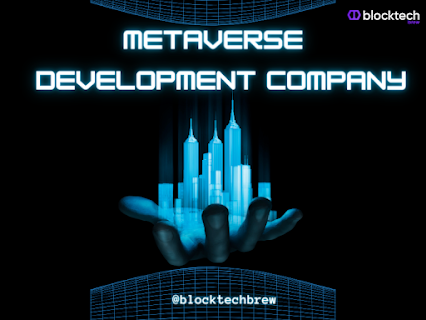The Metaverse: A New Era of Virtual Shared Spaces
It has been around for a long time to have a virtual environment where people may communicate and take part in different activities. The Metaverse is a more immersive and connected environment that has been made feasible by recent technological breakthroughs. This article will look at the Metaverse, how it functions, its origins, and potential effects on culture and society.
What is the Metaverse?
Science fiction author Neal Stephenson first used the word "metaverse" in his 1992 book Snow Crash. It describes a shared virtual environment where users can engage in seamless, immersive interactions with each other and digital items. The Metaverse is a network of interconnected virtual worlds, games, and social spaces rather than a single platform or application.
The Concept of Virtual Shared Spaces
Since the 1980s, text-based virtual communities like MUDs and MOOs as well as more current virtual worlds like Second Life and Minecraft have existed as shared virtual places. People may interact, express themselves creatively, and explore in ways that aren't feasible in the physical world thanks to these locations. By building a more immersive and connected environment that resembles a parallel reality, the Metaverse advances this idea.
The History of the Metaverse
From the holodecks in Star Trek to the OASIS in Ready Player One, the concept of a virtual shared environment has been explored for decades in science fiction. The idea didn't start to materialise in the actual world, though, until the 1990s. Early virtual worlds like Habitat and WorldsAway were created, and Neal Stephenson's 1992 book Snow Crash popularised the idea of a "Metaverse" as well. A renewed interest in the concept of the Metaverse has emerged in recent years as a result of technological breakthroughs like virtual reality, blockchain, and decentralised networks.
How the Metaverse Works
The Metaverse is a decentralised internet-based network of virtual environments and software programmes. VR headsets, Computers, and mobile devices are just a few of the technologies that can access these virtual realms. Users can build avatars, which are digital versions of themselves that can be customised, in the Metaverse. They can then communicate with other users, virtual surroundings, and digital items.
Decentralization and Interoperability
The decentralised nature of the Metaverse is one of its primary characteristics. The Metaverse, unlike conventional virtual worlds, is not governed by a single organisation or Metaverse App Development Company. Instead, a decentralised network of interconnected nodes is used to provide consumers with a seamless and safe experience. The Metaverse also has interoperability as a key feature. The Metaverse's virtual environments and applications ought to be able to communicate with one another, enabling a seamless user experience across various platforms.
Avatar Customization and Digital Asset
The ability to customise avatars and access digital content is a key component of the Metaverse. Avatars can be made by users and customised to represent their personalities and preferences. Users can also purchase virtual goods that can be traded and sold within the Metaverse, such as clothing, accessories, and real estate.
Social Interaction and Commerce
The Metaverse's fundamental feature is the capacity to edit avatars and access digital material. Users can create and customise avatars to reflect their personalities and preferences. Users can also buy virtual items like apparel, accessories, and real estate that can be bought and sold in the Metaverse.
The Future of the Metaverse
The way we communicate and engage online could be completely changed by the metaverse. It does, however, also provide a number of difficulties and issues, including privacy, security, and accessibility. Here are some scenarios that could affect the Metaverse's future:
Impact on Society and Culture
Society and culture may be significantly impacted by the metaverse. It could lead to new issues for privacy, security, and diversity as well as new opportunities for learning, entertainment, and social engagement. The lines between the real and virtual worlds may become less distinct, creating new opportunities for community, identity, and meaning.
Opportunities and Challenges
The Metaverse presents both opportunities for innovation and creativity and difficulties for administration and control. Together with new kinds of inequity and exploitation, it might also produce new forms of collaboration and entrepreneurship. Also, it might lead to ethical and philosophical discussions regarding the nature of reality, awareness, and moral principles.
Real-World Applications of the Metaverse
The Metaverse has various real-world applications, including:
Gaming and Entertainment
Gaming and entertainment are some of the most obvious applications of the Metaverse. The Metaverse could offer new forms of immersive and social gaming experiences, as well as new forms of entertainment such as virtual concerts, art shows, and festivals.
Education and Training
The Metaverse could also offer new opportunities for education and training. It could create new ways of learning and collaboration, as well as new forms of simulation and experimentation. It could also offer new opportunities for remote and distributed learning.
Business and Marketing
The Metaverse could also offer new opportunities for business and marketing. It could create new channels for advertising and customer engagement, as well as new forms of e-commerce and digital payments. It could also create new opportunities for innovation and disruption in various industries.
Conclusion
The Metaverse is a new era of virtual shared spaces that offers various opportunities and challenges for society, culture, and the digital world. It could create new forms of entertainment, education, and commerce, as well as new forms of identity, community, and meaning. However, it also poses various challenges for privacy, security, and accessibility, as well as ethical and philosophical questions about the nature of reality and human values.



Comments
Post a Comment